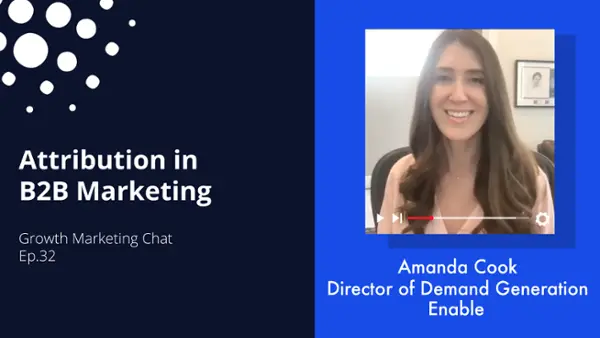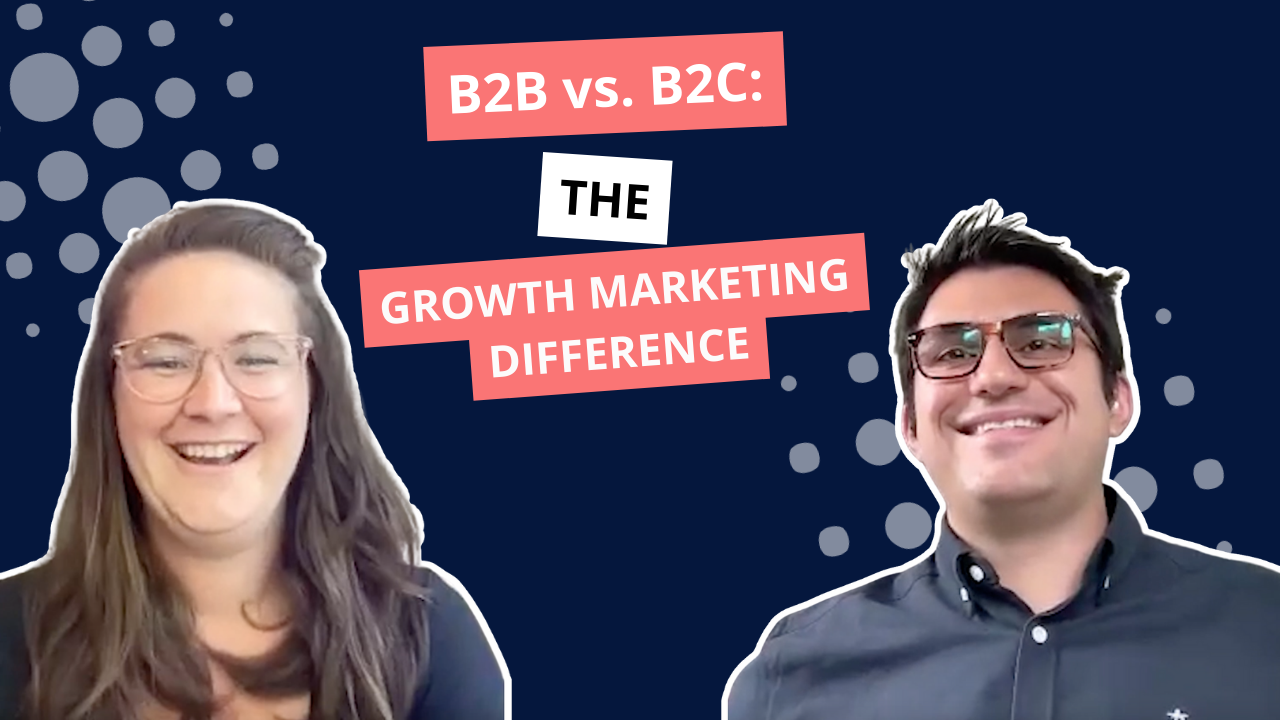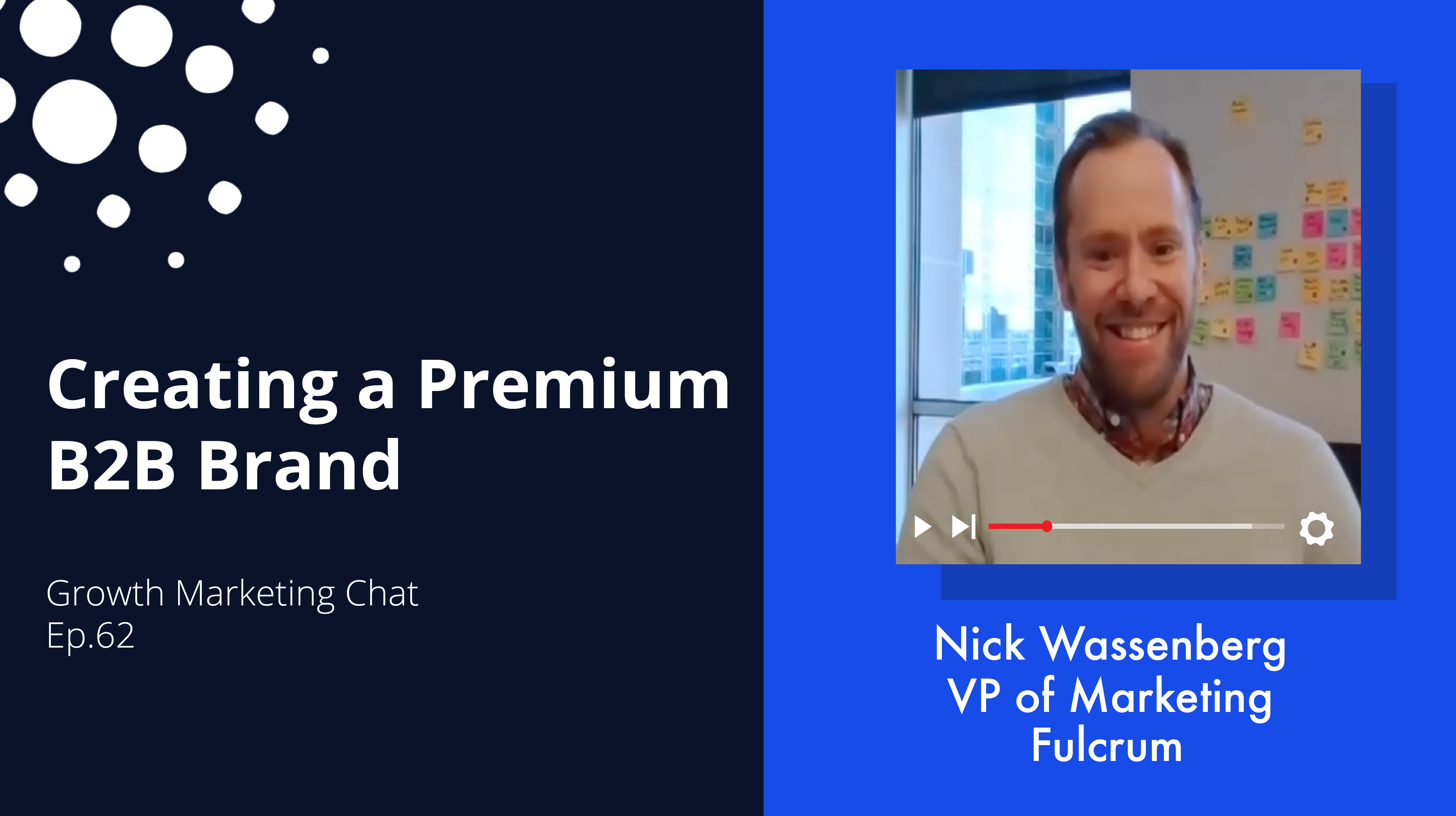
Did you know that roughly 50% of marketers say they struggle with accountability or accuracy of attribution reports?
If you have a love-hate relationship with marketing attribution, you’re not alone.
If you practice cross-channel marketing or implement strategies that don’t necessarily allow for tracking of results, attribution can be a complex task to handle. How do you know where leads are coming from and what’s working the best?
Well, with a little bit of insight from your peers on how to appropriately construct an attribution model (while still having creative freedom), we may be able to sway you toward the “love” side of B2B marketing attribution.
Building B2B Marketing Attribution Models
Amanda Cook, a B2B Demand Generation expert at Enable, breaks down how marketers can set up strong attribution models. Some key concepts she covers are:
- Partnering with your sales team and aligning on goals and strategies
- Setting up tracking mechanisms: primary and secondary lead sources
- Tracking first and last marketing engagements
- Using data as directional information
- Using all marketing data (new and old) to guide future decision-making
Amanda reminds us that we can’t wait for data to be perfect, otherwise we’ll always be waiting! Tune in now to see how you can improve your attribution program.
Video Transcript:
CAROLINE: Hi, welcome to Growth Marketing Chat. Today I’m here with Amanda Cook. She is currently working at the third fastest-growing B2B SaaS company. She’s been in demand gen for a long time and now she is the Director of Demand Generation at Enable. Amanda, thank you so much for being with me today.
AMANDA: Thank you so much for having me.
CAROLINE: So today we’re gonna talk about attribution and there’s kind of a love-hate relationship between marketers and attribution. You know, we love having attribution but at the same time, it’s tricky, right? So why do you think there’s, you know, that back and forth with attribution?
AMANDA: Yeah, absolutely. So, I think as marketers, we tend to have this balancing act between being really creative and also really analytical. And I think attribution tends to weigh a lot heavier on the analytical side and it can really be beneficial to us because we can make really great decisions and we can make sure that we’re resourced properly. But at the same time, it’s, it’s hard to do. I mean, there is a reason that attribution is kind of this Holy Grail concept that everybody wants to have. I like to think of an example of a billboard, right? If you’re driving down the highway and you see a billboard, that can have incredible marketing impact but there’s no UTM parameters, there’s no tracking links on that. So how do we capture attribution when our job is to create awareness throughout with these really creative ways? But a lot of times you can’t track everything perfectly. So, I think that’s, that’s sort of why there is that love-hate because we all want to make better decisions with our attribution, but it’s hard to do.
CAROLINE: Yeah, yeah, yeah, absolutely. And so, you know what would be your advice because obviously, you know, you’re in that demand gen position that you do need to be really creative to you know, accelerate your growth, but at the same time, you also need to obviously justify your choices and show traction and show results. So, what would be your advice for marketers, especially, you know early-stage marketers that don’t necessarily have like, access to all the data and all the tools, right. What would be your advice to like, set up a good attribution program or use the data in a smart way?
AMANDA: Yeah. Great question. So, I think the first part is to make sure that you’re partnering with sales and that you are on the exact same page with sales. I think typically there tends to be some tension when it comes to attribution and who is bringing in an opportunity. Is it marketing? And is it sales? I don’t think it’s an either-or situation. I actually think it works best when we’re working in tandem and not just through the, you know, who can get the lead in the door but who can actually, we really both want to be influencing that entire customer journey. And so, I think that step one is really making sure there’s a partnership going on rather than competition between the two departments.
And one way that we’ve been able to do that is setting up a few different, really simple tracking mechanisms. So, the first is, where are we actually getting our leads from? So, we use a primary lead source, which would be like a larger bucket, like maybe paid media, and then we’ll use a secondary lead source that would tell us whether that media is from Google, LinkedIn or maybe a different paid media source. So, then that tells us, okay, where are our leads coming from? Then what we do is we track their first marketing engagement and their last marketing engagement. And so that tells us, okay, well, where are those leads coming into? What are they most attracted to? And what’s the last thing they do before they become an opportunity. And we replicate that tracking mechanism for sales as well. So, we can tell maybe a phone call is a really a great way to get a prospect on the line. And maybe having a booked meeting is the, is the best thing to do before they become an actual opportunity. So, I think by having those really simple tracking mechanisms you can have what I’ve termed “directional data,” so that you can make the best choices based on, based on this directional data. It’s not perfect attribution by any means. It’s not showing every single touch, but it’s showing a lot of key touch points throughout the journey.
CAROLINE: Mm hm. Yeah. And I think, you know, I think you really, you really nailed it here, right? It’s not perfect. And it’s okay. You can still make decisions with imperfect data. Actually, most of the time, you have to make decisions with imperfect data.
AMANDA: Yeah, absolutely. And I think if you spend too much time waiting for data to be perfect, you’re not actually able to course correct in a timely manner. So, you’re waiting often for the campaign to finish before you can actually analyze it. So, this allows you to really start making decisions while a campaign is in flight. So, you can see, is this really doing well? So, I should put more money or more resources behind it? Or is this failing, and I should pull the plug on it now before I get to the end of the quarter and have to report on really bad data?
CAROLINE: Right. Right. No, that’s a, that’s a great point. So here we go. We just need to be a little bit less demanding with attribution models and then they should be really helpful.
AMANDA: Yeah, absolutely.
CAROLINE: Alright, well, thank you so much, Amanda. I really appreciate it.
AMANDA: Yeah. Thank you for having me.






